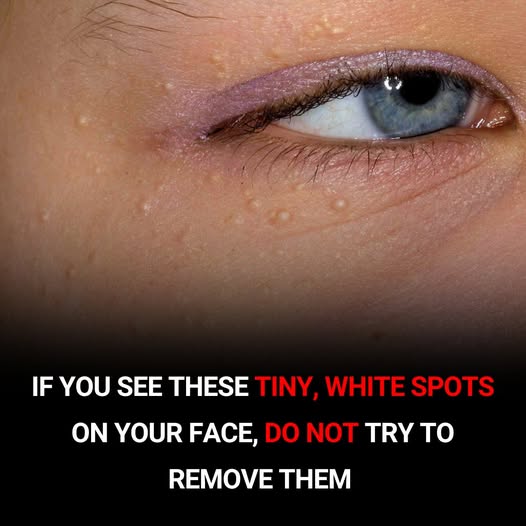Did you know this?
These small white spots are most likely milia (singular: milium). They are tiny cysts that form just beneath the surface of the skin, and they are not pimples, whiteheads, or acne.
❓ What Are Milia?
- Milia are small, hard, white or yellowish bumps.
- They typically appear on the cheeks, eyelids, nose, forehead, or chin.
- They form when keratin (a protein found in skin, hair, and nails) becomes trapped under the skin.
- Common in infants and adults, especially with dry, damaged, or sun-exposed skin.
⚠️ Why You Should NOT Try to Remove Them Yourself:
- They are not extractable like pimples
- Milia have no opening or pore, so squeezing or poking won’t help — it only damages your skin.
- Risk of infection and scarring
- Using needles or fingers can introduce bacteria, leading to redness, infection, or permanent scars.
- Delicate areas at risk
- Milia often occur around the eyes, where the skin is thin and sensitive. Trying to remove them yourself can cause irritation or even eye injury.
✅ What You Should Do Instead:
🧴 1. Use Gentle Exfoliation
- Look for products with alpha hydroxy acids (AHA) or beta hydroxy acids (BHA) like:
- Glycolic acid
- Lactic acid
- Salicylic acid
- These help to loosen dead skin cells and may allow the milia to surface and resolve naturally.
🧼 2. Cleanse Regularly and Gently
- Use a gentle, non-comedogenic cleanser.
- Avoid heavy or pore-clogging creams — especially around the eyes.
☀️ 3. Use Sunscreen Daily
- UV damage increases the likelihood of milia.
- Use non-comedogenic SPF to protect your skin and prevent further buildup.
🧖 4. Try Warm Compresses
- Apply a warm, damp cloth to the area for a few minutes daily. It may help open the skin slightly over time.
🧑⚕️ 5. Consult a Dermatologist
- If milia persist or bother you, a licensed skin specialist can safely extract them using sterilized tools.
- Dermatologists may also use chemical peels, laser treatments, or retinoid creams to help manage recurring milia.
🟡 When Should You Be Concerned?
- If the white spots change shape, color, or size, or if they become painful, it could be something other than milia.
- Seek professional evaluation to rule out conditions like sebaceous cysts, milky spots from sun damage, or other dermatological issues.
🔑 In Summary:
- Don’t squeeze or pick at white spots on your face — they are likely milia, not acne.
- Use gentle skincare and exfoliation.
- Protect your skin from sun damage.
- See a dermatologist for safe and effective removal.
